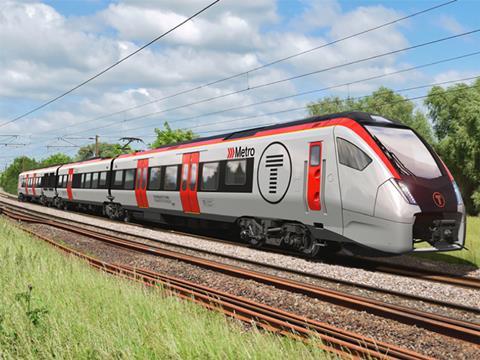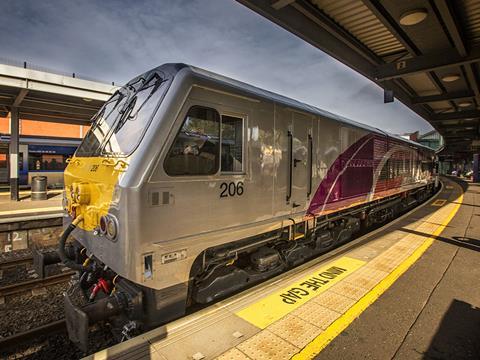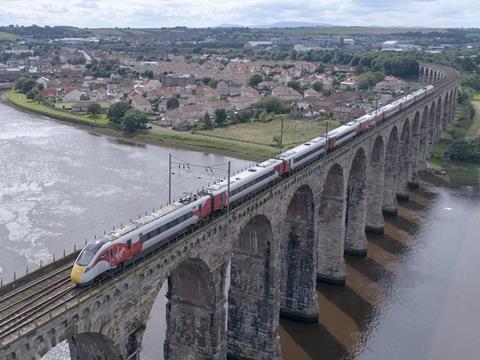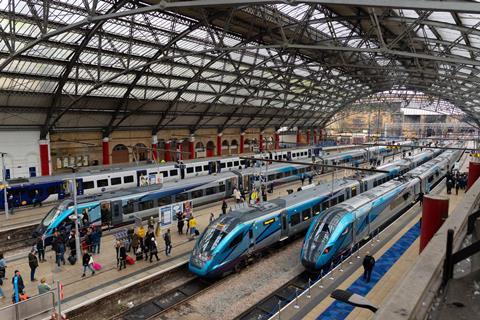
UK: The government has published an interim report from the Union Connectivity Review into improved transport links across all parts of the UK, which is being undertaken by Network Rail Chairman Sir Peter Hendy.
The report suggests that a UK Strategic Transport Network modelled on the European Union’s Trans-European Network for Transport could help to boost connectivity by focusing attention on the expansion and upgrading of strategic rail, road, sea and air connections between England, Scotland, Wales and Northern Ireland.

Hendy said ‘devolution has been good for transport but it has also led to a lack of attention to connectivity between the four nations, due to competing priorities and complex funding’. He suggests that ‘a UK Strategic Transport Network could resolve this, with its core objective centred around levelling up across the whole of the UK.’
According to the report, ‘in recent years the UK has put an annual average of €447m into CEF-T, the EU transport funding mechanism, but received back only a tenth of that figure. This creates the opportunity to replace this by a UK network, with the same objectives, but tailored to respond to the UK’s needs including the levelling up agenda.’
Consultation had found ‘widespread approval for this concept’, Hendy added, ‘provided it is funded, and that funding is not subtracted from existing funding of the devolved administrations.’
Rail proposals
The interim report sets out concepts and progress with the review, but does not set out any detailed schemes. Hendy says the work will now focus on identifying specific potential transport upgrades for inclusion in the final report, which is expected to be completed in the summer.

The review will determine which schemes should be ranked as ‘very high’, ‘high’ and ‘medium’ priority, taking into account costs, benefits, need, feasibility, timing, value for money and environmental impact. The interim report points out that the best answer is not always investing in expensive infrastructure, and ’often solutions can be found by better connecting existing systems.’

Feedback from stakeholders and consultees has identified rail projects ‘of interest’, including upgrading of the East Coast and West Coast main lines, capacity enhancements in the Bristol and southeast Wales area, High Speed 2, improved rail connections between north Wales, Merseyside and Manchester; higher capacity connections from Belfast to the northwest of Northern Ireland; and linking with the Republic of Ireland’s plans for railway development.
The government has committed an initial £20m towards exploring improved rail connectivity between the north Wales coast and England, faster rail links from England to Scotland, including looking at options to enhance the West Coast Main Line, and rail improvements in southeast Wales.
Industry response
‘It is positive to see the government set out ideas for new rail investment’, said Darren Caplan, Chief Executive of the Railway Industry Association. ‘Rail has a vital role to play in the UK’s economic recovery from coronavirus and in achieving net zero by 2050, but to do so it needs certainty on planned rail schemes, like HS2 Eastern Leg, Northern Powerhouse Rail and the Midlands Rail Hub, as well as visibility of upcoming rail enhancement schemes, and the decarbonisation and digitalisation of the network.’

Andy Bagnall, Director General of the Rail Delivery Group, said ‘funding to look at developing better rail links between England, Scotland and Wales rightly recognises the key role trains will play in a future decarbonised transport network.’
However he expressed concern about the government’s suggestion it could cut air passenger duty on domestic flights, saying ‘government should ensure there is a level tax playing field across cars, planes and trains with each paying according to the environmental impact they have. This would encourage people to make greener choices to get from A to B’.
TSSA General Secretary Manuel Cortes said ‘cutting passenger duty on domestic flights flies in the face of the government’s apparent climate commitments. If Johnson wants to be taken seriously at COP26 then his government needs to invest in truly green public transport, in particular rail which is the most effective inter-city connection taking people to the heart of our towns and cities.’

Tim Foster, Interim Strategy & Programmes Director at Transport for the North, said the north of England ‘must be at the heart of the mission to better connect the whole of the UK and level up’, adding that ‘investment in our infrastructure is critical to improving key routes across our borders to Wales, Scotland and further south. It’s positive to see the early rail and road projects highlighted by the review strongly aligned to those in our own infrastructure pipeline’.
The High Speed Rail Group said a series of specific improvements could achieve a 3 h journey time between London and Glasgow. ‘A truly national high speed rail network will be essential in not only improving capacity, but levelling up our economy and reaching our 2050 net zero goals’, said a spokesperson. ‘With the Union Connectivity Review set to be published this summer, the government should commit to funding the final report’s recommendations as part of the next spending review.’



